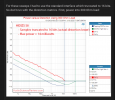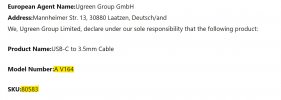Thank you very much, it makes very sense. I didn't think about that issue in sweeps test, only remembered about some grounding problem that affected Amir's tests and thought that those should have impacted sinad too, like in Meizu Pro review. But then you remarked this other aspect, that we can see in
S8 and other tests (
Tanchjim Space,
Hidisz S9: good sinad, "bad" noise in power sweeps), and yes, it now makes sense. I was also mislead by other CS43131 dongles tests that did'n show that issue, like Tempotec
Sonata HD and
BHD, both behaving much like your tests, but now I'm thinking that Tempotec provides Asio drivers witch should be compatible with AP software and again, everything makes sense.
Now, after reviewing all those tests, ans summarizing what said in precedent posts, some personal and probably useless considerations related to me using them with pc and not on the go with smartphone:
- all CS43131 dongles without additional op-amp shows an early rise in thd+n with low impedance loads not seen in the 2 units having op-amp (Ugreen and Meizu Pro), while all units behaving nice when not loaded. On the other hand, Meizu Pro and Ugreen, having CS46L41 usb bridge working in sync mode, show worse jitter then model with Savitech async bridge. All of this makes no op-amp unit best suited as pure dac with Meizu Pro and Ugreen better at directly driving headphones;
- Both Meizu Pro and Ugreen use opa1622 op-amp, it would be interesting to see measurements of recent dongles using the discussed Ricore 6183 and SGM 8262, especially interesting would be the extremely affordable Fiio KA11 with SGM op-amp and Savitech bridge.
- OK, I finished talking nonsense, thanks again!




